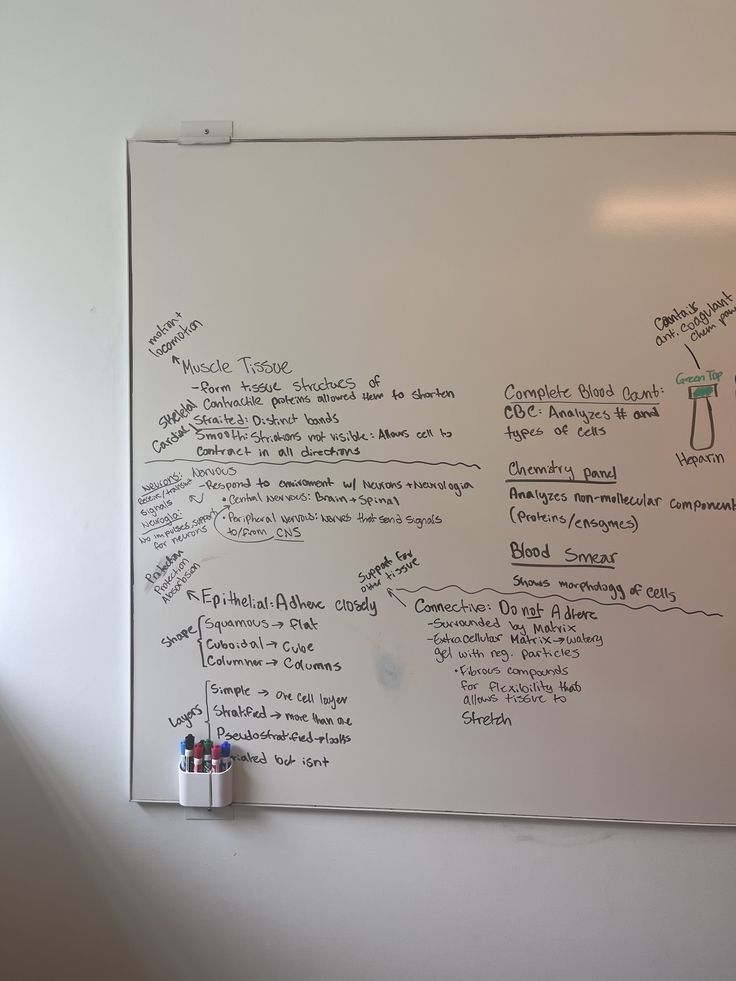How to write quality essays faster.
How to write an essay fast: 10 Proven Steps to Write High-Quality Essays Faster.

Writing an academically worthy essay is a cornerstone of success for students, researchers, and professionals alike. Whether it’s a critical analysis for a course, a detailed research paper, or a comprehensive professional report, the demand for high-quality, well-researched content is constant. Yet, the process can often feel daunting, leading to stress, procrastination, and missed deadlines
At TopAcademicMasters.com, we understand these challenges. That’s why we’ve compiled a definitive, step-by-step guide, drawing on expert advice and proven techniques, to help you master the art of writing academically worthy essays with unprecedented speed and efficiency. By applying these strategies, you can significantly enhance your writing productivity, improve the quality of your work, and boost your confidence in tackling complex academic tasks.
Let’s dive into the 10 effective steps to supercharge your academic writing process!
1. Clearly State Your Research Purpose: The Foundation of Focus
Before you even begin to draft a single sentence, the most critical step is to define the main purpose of your research or essay. This isn’t just a formality; it’s your navigational compass. Ask yourself:
- What specific question do I aim to answer?
- What is the core argument I intend to make?
- How much time am I willing to dedicate to this task? What should the ultimate, tangible outcome or contribution of this essay be?

By explicitly outlining these parameters, you establish a clear scope for your work. This initial clarity helps you focus on the key aspects and avoid unnecessary deviations or “rabbit holes” during your research and writing phases. It ensures that every piece of information you gather, every argument you construct, and every word you write contributes directly to your overarching goal, making your essay more coherent and impactful. This foundational step is crucial for efficient time management from the outset
2. Create a Detailed Plan and Outline: Your Essay’s Blueprint
Once your purpose is crystal clear, the next step is to construct a detailed work plan or outline. Think of this as the architectural blueprint for your essay. A well-structured plan is paramount for successful and fast writing.
For many academic papers, especially research articles, the international IMRAD structure (Introduction, Methods, Results, Discussion) serves as an excellent framework. Even for more general essays, adapting this logical flow can be incredibly beneficial.

Here’s how to create an effective outline for faster essay writing:
- Divide your essay into main sections (e.g., Introduction, Literature Review, Methodology, Analysis, Discussion, Conclusion) and briefly describe the essential content for each.
- Start by carefully planning the Discussion and Introduction sections. While you won’t write them first, having a clear idea of your potential conclusions and how you’ll introduce them helps shape the entire narrative. Experienced writers know that this detailed upfront planning saves significant time and effort later on.
- Make a list of subsection titles within each main section and add key points that need to be covered. These points should serve as miniature thesis statements for each segment.
- Integrate references into your outline immediately during the research literature search phase. This proactive approach prevents you from wasting valuable time searching for them again when you’re deep into drafting. Tools like EndNote, Mendeley, or Zotero can automate this process, significantly simplifying your work with sources and minimizing citation errors.
- Gradually add details to your outline, transforming short theses into a coherent textual structure. This framework guides your writing, preventing confusion and the dreaded “blank page syndrome
3. Don’t Start at the Beginning: Strategic Section Sequencing
This tip might sound counter-intuitive, but it’s a powerful strategy for efficiency: do not begin writing your essay with the abstract or introduction. These sections often require a comprehensive understanding of your complete argument and findings, which you typically don’t have at the outset.
The most effective approach is to start with the simpler, more factual parts of your essay. For research papers, this might mean starting with the legend, results, materials, and methods sections. For essays, this could mean:
• Methodology/Approach: Detail how you gathered or analyzed information.
• Main Body Paragraphs: Tackle the sections where you present specific data, examples, or detailed arguments that are clearly defined in your research.
• Results/Findings: If applicable, present your empirical results or the outcomes of your analysis in a straightforward manner.
As one experienced researcher noted, starting with the “cold” facts—the numbers, the experiments, the technical details—can help you overcome writer’s block and get the writing process flowing. The abstract, and even the introduction, are best left until you have formulated your conclusions in the discussion section and fully interpreted your data. This order allows you to craft an introduction that perfectly sets up your overall conclusion, ensuring the entire essay is more logical and coherent. Similarly, the conclusion often flows naturally once your main arguments are fully developed.
4. Develop Regular Writing and Editing Habits: Building Your “Writing Muscles”
Consistency is key to mastering academic writing. Getting into the habit of writing and editing regularly will undoubtedly yield better results and significantly speed up your process

• Establish a routine: Try to sit down for your writing tasks at the same time each day. When writing becomes a routine, it becomes easier and faster. This habituation helps your brain transition into a productive state more readily.
• Write regularly in small blocks: Divide the entire writing process into smaller, manageable tasks. Aim to write at least a few paragraphs daily. To build momentum, start with the sections that seem easiest or most understandable to you. This “writing sprint” approach helps prevent procrastination and boosts productivity. Even 150-200 words a day can build significant momentum over time.
• Writing is thinking: As highlighted in the sources, it’s a mistake to view writing, thinking, and experimenting as separate activities. For many, writing is a form of thinking itself; we discover what we truly think by putting it into words. Regular writing, even if not directly thesis-related, sharpens your “writing muscles” and increases overall efficiency.
• Allocate dedicated editing time: After writing a draft, make sure to set aside specific time to proofread and refine your text. This crucial step not only improves quality but also contributes to finishing your paper faster by catching errors early
5. Leverage Speed Reading for Efficient Research: Process More, Faster
Academic writing demands extensive research, which means processing vast amounts of information from books, journals, and online resources. This is where speed reading becomes a game-changer for essay writers
Speed reading is a technique that enables individuals to read and process information at a faster rate than traditional methods. Far from compromising comprehension, proper training can actually enhance it.
The benefits of incorporating speed reading into your research are manifold:
• Increased Efficiency and Time Management: Speed reading allows you to quickly scan through large volumes of text, identify relevant information, and extract key points in a fraction of the time. This drastically reduces the time spent on research, freeing up more time for the actual writing, organization, and refinement of your essays. This is particularly advantageous when facing tight deadlines.
• Enhanced Comprehension and Retention: Speed reading techniques encourage active engagement with the text, prompting you to identify main ideas, key points, and important details. This leads to a deeper understanding of the source material, enabling you to synthesize and incorporate relevant information more effectively into your writing, resulting in more insightful and well-supported essays.
• Improved Critical Thinking and Analysis: By engaging with text at a faster pace, you are compelled to actively evaluate and prioritize information, fostering critical thinking skills. Techniques like previewing, skimming, and scanning train you to quickly assess the structure and organization of material, helping you identify strengths, weaknesses, and gaps in arguments more efficiently.
• Enhanced Focus and Concentration: Speed reading trains your mind to actively engage with the text, helping you block out distractions and maintain a heightened state of concentration for extended periods. This leads to more productive reading sessions and more effective information gathering.
• Reduced Stress and Increased Confidence: By working more efficiently and managing your time better, speed reading can alleviate the stress associated with deadlines. As you become more proficient, you’ll gain a sense of accomplishment and increased self-belief in your ability to handle complex writing tasks.
For TopAcademicMasters.com, investing time in developing speed reading skills is investing in your overall academic success.
6. Automate Routine Tasks & Utilize Templates: Smart Shortcuts for Quality
Don’t let formatting, citation, and structural issues consume your valuable writing time. Automating routine tasks and leveraging existing templates can significantly streamline your process

• Bibliography Management Tools: Use automated tools such as EndNote, Mendeley, or Zotero. These tools greatly simplify the process of working with sources, automatically generating citations and bibliographies in various styles, and crucially, helping you avoid common citation errors. This ensures academic integrity and frees you from tedious manual formatting.
• Templates and Examples: Many reputable academic journals, particularly those indexed in databases like Scopus and Web of Science (WoS), provide templates or detailed author guidelines on how to format scientific articles. Utilize these! They save immense time on formatting details that can be distracting. It is also highly recommended to study published articles on your specific topic to understand the accepted structure, style, and presentation. This not only aids in formatting but also helps in refining your argumentative style.
7. Embrace the Drafting Technique: From Rough Ideas to Refined Prose
A common pitfall for writers is attempting to write a perfect text in one go. This often leads to frustration and writer’s block. Instead, embrace the drafting technique: start with a rough draft, gradually improving and supplementing it as you work

• “Anything goes to get text on the page”. When you’re stuck, the goal is simply to overcome the “white page bump”. Don’t censor yourself. Write down any thought, even if it’s just a placeholder like “I need a paragraph here discussing the main idea of X”. This approach helps combat procrastination and builds momentum.
• Focus on content first, perfection later. Your initial draft will likely be far from perfect, and that’s completely normal. It’s meant to be a collection of your ideas and arguments. You can record yourself telling “the story of your paper” to someone and then transcribe it, or simply dump all your random thoughts on the page and structure them later.
• The real work begins after the first draft. Once you have a full, albeit rough, draft, you have something tangible to work with. This “mishmash of words” is where the true editing and polishing begins. Style, clarity, coherence, and perfection all come later. By separating the act of generating ideas from the act of refining them, you make each stage more manageable and less intimidating.
8. Integrate Generative AI Prudently for Enhanced Productivity
In the rapidly evolving landscape of academic tools, generative Artificial Intelligence (AI), specifically Large Language Models (LLMs), offers powerful capabilities to elevate the quality and efficiency of academic writing. However, it requires a prudent and thoughtful approach.

• Human-AI Collaborative Framework: Consider AI as a partner within a collaborative framework that delineates the ‘why,’ ‘how,’ and ‘what’ of AI engagement. AI can provide cognitive offloading, reducing mental strain, and imaginative stimulation, helping you explore new ideas.
• AI’s Role in the Writing Process: AI can assist through a two-stage model:
◦ Outlining: AI can help generate initial structures or expand on bullet points, offering new perspectives on how to organize your arguments.
◦ Drafting: It can assist in generating initial sentences or paragraphs, especially for less critical sections, or help rephrase complex ideas.
◦ Editing: AI can be invaluable for proofreading, checking grammar, suggesting stylistic improvements, identifying repetitive phrasing, and ensuring clarity and conciseness. Intelligent writing assistants, like those evaluated in research for argumentative writing, can help recognize and categorize revisions, leading to improved writing outcomes.
• Strategies for Responsible Use: While AI can be a powerful accelerator, it’s crucial to:
◦ Maintain rigorous scholarship: Always verify facts, arguments, and sources generated by AI. Your intellectual honesty and research integrity remain paramount.
◦ Adhere to journal and institutional policies: Familiarize yourself with specific guidelines regarding AI tool usage, as these vary widely.
◦ Avoid overreliance: Use AI as an assistant to augment your skills, not to replace your critical thinking and unique voice. The goal is to ease the communication burden, empower authors, and accelerate discovery without compromising originality
9. Prepare for Review and Seek Professional Editing: Ensuring Publication Success
The journey of an academic essay doesn’t end with your final draft. A crucial step, especially for those aiming for publication, is preparing for review and actively seeking external feedback
Allow others to check your work: Fresh eyes can catch errors and suggest improvements that you, as the author, might overlook. Share your draft with trusted colleagues, mentors, or peers for their feedback. This peer review process is invaluable for identifying logical gaps, unclear phrasing, or areas needing more development.
• Contact professional editors: To truly maximize your chances of successful publication in reputable scientific venues, consider engaging professional editors. Experts in editing and design, like those at Scientific Publications, are intimately aware of all the specific requirements necessary for publication in prestigious scientific databases such as Scopus and Web of Science.
• Benefits of professional editing: By entrusting your work to professionals, you can ensure that your article is prepared at a high level, avoiding typical mistakes and significantly increasing the probability of successful publication. This allows you to focus more on your scientific research itself, knowing that the presentation will meet stringent academic standards. For assistance with editing and design, resources are available to provide professional support
10. Refine and Polish: The Art of Academic Perfection
The final stage of writing an academically worthy essay is the meticulous process of refinement and polishing. This is where your rough draft transforms into a scholarly masterpiece.
• Allocate dedicated time for proofreading: As mentioned earlier, scheduling specific time for proofreading your text is non-negotiable. This isn’t just about spell-checking; it’s about checking for grammatical errors, punctuation mistakes, clarity of sentences, flow between paragraphs, and overall coherence of your arguments.
• Review for clarity and conciseness: Academic writing values precision. Scrutinize every sentence to ensure it conveys your meaning clearly and concisely. Eliminate jargon where simpler language suffices, and remove any redundant words or phrases.
• Check adherence to guidelines: Revisit the specific formatting and style guidelines (e.g., APA, MLA, Chicago) provided by your institution or target journal. Ensure all citations, references, headings, and visual elements (tables, figures) conform to these standards.
• Read aloud: Reading your essay aloud can help you catch awkward phrasing, grammatical errors, and clunky sentences that you might miss when reading silently. It forces you to process the text differently.
• Iterative refinement: Remember that even after the first draft, the “real work” starts. Editing is an iterative process. You might go through several rounds of revisions, focusing on different aspects each time (e.g., first for argument flow, then for sentence-level clarity, then for grammar). Developing this skill of regular writing and editing will lead to consistently better results
Conclusion: Accelerate Your Academic Journey with TopAcademicMasters.com
Writing an academically worthy essay efficiently is a skill that can be developed and refined through consistent practice and strategic application of proven techniques. From clearly defining your purpose and creating a detailed plan to leveraging speed reading, automating tasks, embracing drafting, integrating AI prudently, and seeking professional review, each step in this guide is designed to enhance your productivity and the quality of your output.
By incorporating these 10 steps into your routine, you can overcome writer’s block, manage your time effectively, and produce insightful, well-supported essays that stand out. This commitment to efficient and high-quality writing will not only alleviate stress but also significantly boost your confidence in your academic and professional endeavors.
For more resources and expert guidance on mastering your academic journey, visit TopAcademicMasters.com today and unlock your full potential!



